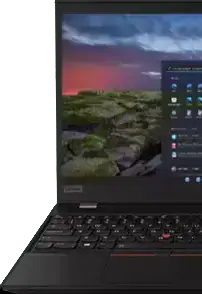What is Hardware Monitor (HWMonitor)?
HWMonitor are tools or software utilities that help you keep tabs on various hardware parameters in your computer system. They give you real-time data on components like your control processing unit (CPU), graphics processing unit (GPU), random access memory (RAM), and hard drive, among others. This can be useful for diagnosing problems, optimizing performance, or simply understanding how your machine is running. You'll get metrics like temperature, fan speed, voltage, and even clock speeds in some cases.
What can I learn from using HWMonitor?
You can learn a lot about your system's health and performance. For example, you can spot if your control processing unit (CPU) is overheating, which could lead to system instability or shutdowns. You'll also be able to identify any underperforming components and take pre-emptive action before they fail. Basically, you become more informed about your computer, which helps with better maintenance and decision-making.
How do I know which HWMonitor to choose?
Look for a tool that supports your system components and offers the metrics you're interested in tracking. User reviews and community forums are a good way to gauge reliability and functionality. Also, some HWMonitor utilities offer a range of features like logging data and setting alerts, so consider what you actually need.
When should I check my HWMonitor?
Ideally, you should check your hardware monitor utility during different types of system loads: idle, moderate, and heavy. This will give you a comprehensive overview of how your hardware is performing. Routine checks are advisable, especially if you've made recent changes to your system like overclocking.
Can HWMonitor help me with overclocking?
Yes, HWMonitor utilities are vital when you're overclocking. They'll provide you with the data you need to ensure you're not pushing your components too far. Keep an eye on temperatures, voltages, and fan speeds to make sure you're staying within safe limits. Remember, successful overclocking is all about balance and stability, so use the data to make informed decisions.
Can using an HWMonitor extend the life of my computer?
Yes, by keeping an eye on hardware metrics, you can identify and address issues before they escalate into bigger problems. This proactive approach can save you from unexpected failures and thereby extend the lifespan of your computer components.
Is an HWMonitor useful for server setup?
Yes, monitoring hardware in a server environment is crucial for ensuring optimal performance and stability. With an HWMonitor, you can get instant updates on temperature, control processing unit (CPU) load, memory usage, and more. This information is invaluable for maintaining a healthy server and avoiding potential downtimes.
Can I automate alerts using an HWMonitor?
Most HWMonitor utilities allow you to set custom alerts for specific hardware metrics. For instance, you can get notified when your control processing unit (CPU) temperature crosses a certain threshold. This feature is extremely useful for taking timely action and preventing hardware failures.
Does an HWMonitor use a lot of system resources?
Generally, hardware monitoring tools are lightweight and have minimal impact on system performance. Most of the time, you won't even notice they're running. However, if you enable additional features like data logging or frequent polling intervals, the resource usage may go up a bit.
Can an HWMonitor show me disk health?
Yes, many HWMonitor utilities can display S.M.A.R.T attributes, wh0ich provide insights into the health of your hard drive or solid state drive (SSD). By monitoring these attributes, you'll be better prepared to take action if your disk shows signs of impending failure.
How do I interpret the data from my HWMonitor?
It depends on what you're looking to achieve. For a casual user, paying attention to temperatures and fan speeds is usually sufficient. However, if you're more technically inclined, you may want to delve into voltages and clock speeds. Guides and tutorials are widely available to help you understand what each metric means and how to interpret it.
Is it possible to use HWMonitor on a virtual machine?
Yes, but the data may not be as accurate as when monitoring a physical machine. Virtual machines often rely on the host system's hardware, so the metrics may be somewhat skewed. However, you can still get a general idea of how the virtual system is performing.
Is there a difference between HWMonitor for laptops and desktops?
The core functionality is the same, but some metrics may not be available on laptop specific HWMonitor utilities due to hardware limitations. For example, voltage readings are often not accessible on laptops. Nonetheless, you'll still get valuable information like temperature and control processing unit (CPU) usage.
Can I monitor multiple systems with one HWMonitor?
Yes, some advanced HWMonitor support remote monitoring capabilities. This means you can check the hardware status of multiple machines from a single interface, as long as their network is connected. This is particularly useful in enterprise environments where you may need to keep an eye on several systems simultaneously.
Can I use HWMonitor to improve my gaming performance?
While an HWMonitor itself won't improve gaming performance, it can provide data that helps you make adjustments for better gameplay. For instance, if you notice that your graphics processing unit (GPU) temperatures are too high, you might decide to clean out your cooling system or even apply new thermal paste.
Is it possible to use HWMonitor on a Raspberry Pi or other single-board computers?
Yes, some HWMonitor are compatible with Raspberry Pi and other single-board computers. The metrics available might be limited compared to a full-fledged PC, but you can still monitor essential hardware stats like temperature, control processing unit (CPU) load, and memory usage.
What's the difference between software and hardware based HWMonitor?
Software-based HWMonitors are applications you install on your operating system. They provide detailed metrics but might not be as accurate as a physical hardware-based monitor, especially for real-time data. Physical Hardware-based monitors are directly connected to your system, often integrated into high-end motherboards or available as separate peripherals. They measure data directly from the hardware, providing you with more precise information. However, they can be costly and are usually used in specialized or professional setups.
Is it possible to monitor mobile devices with HWMonitor?
While traditional HWMonitors are geared towards desktops and laptops, there are mobile-specific apps that offer similar functionalities. These apps can monitor control processing unit (CPU) usage, battery health, memory utilization, and even temperatures on your smartphone or tablet. Keep in mind that the range of metrics and the level of detail may be limited compared to what you'd get on a full-fledged computer system.
How does the refresh rate of an HWMonitor affect its performance?
The refresh rate in this context refers to how often the HWMonitor updates the data it displays. A faster refresh rate gives you more real-time information, which is particularly useful for diagnosing issues or monitoring system changes closely. However, higher refresh rates can also consume more system resources. Generally, a moderate refresh rate is sufficient for routine monitoring. You can always increase the rate temporarily for more intensive diagnostic work.
















